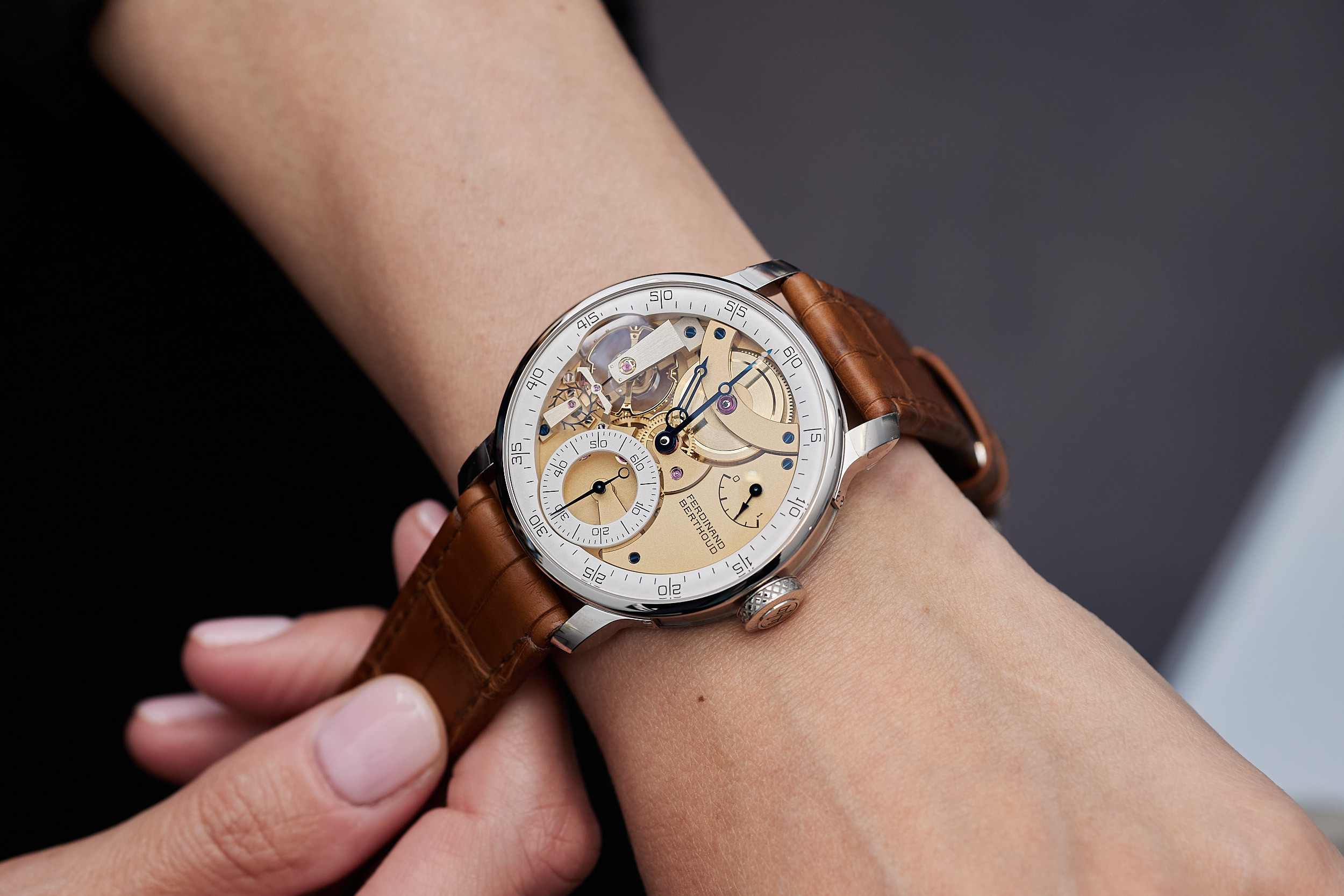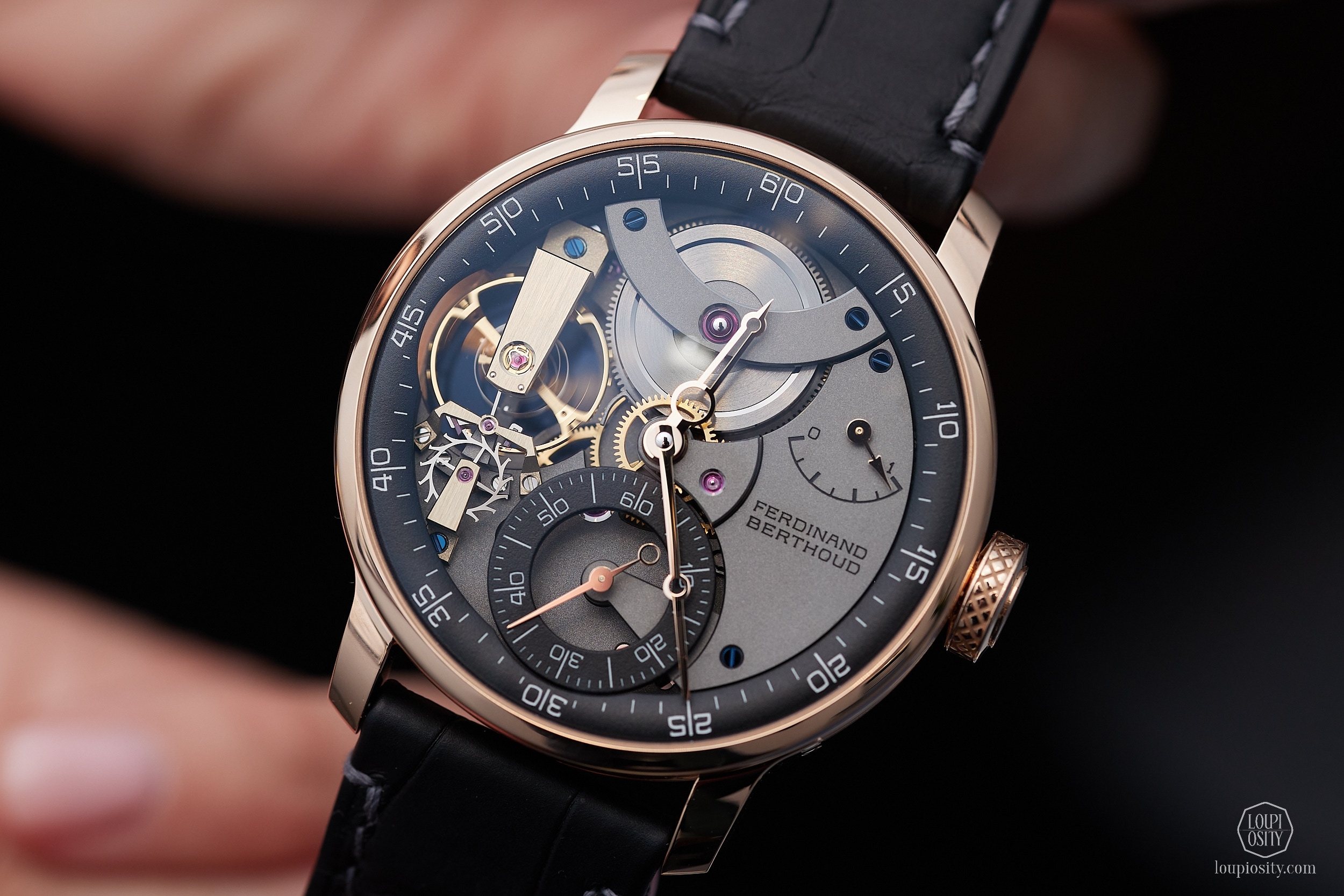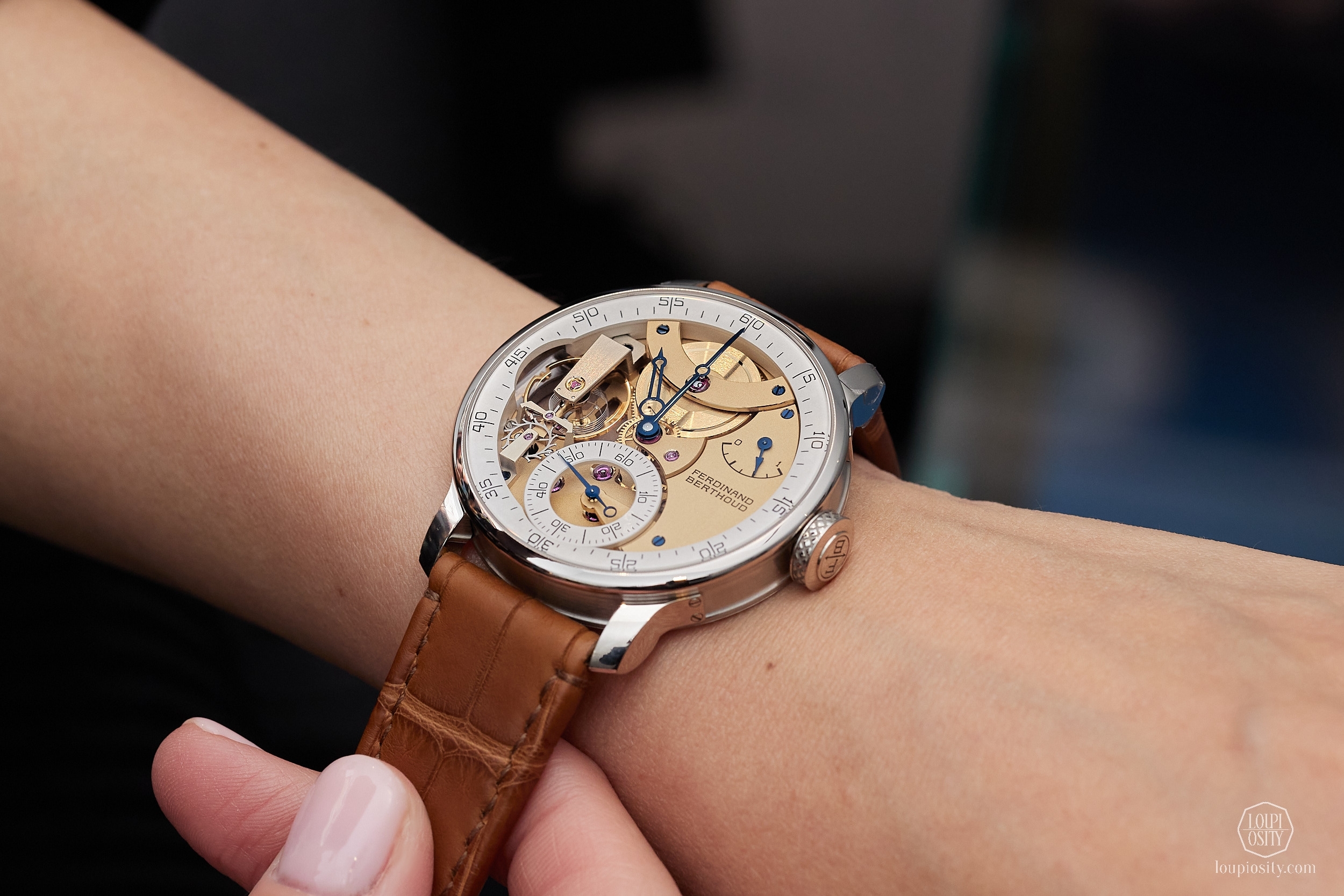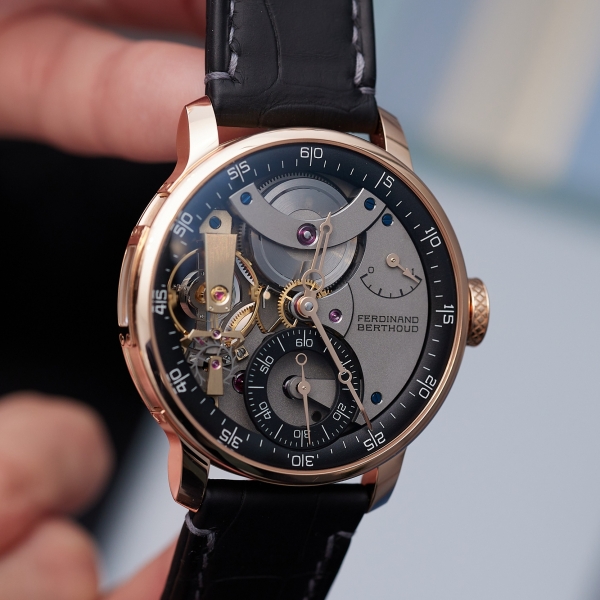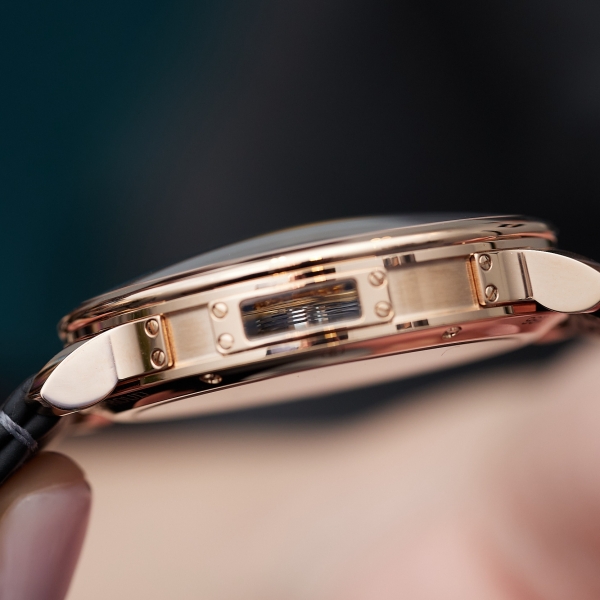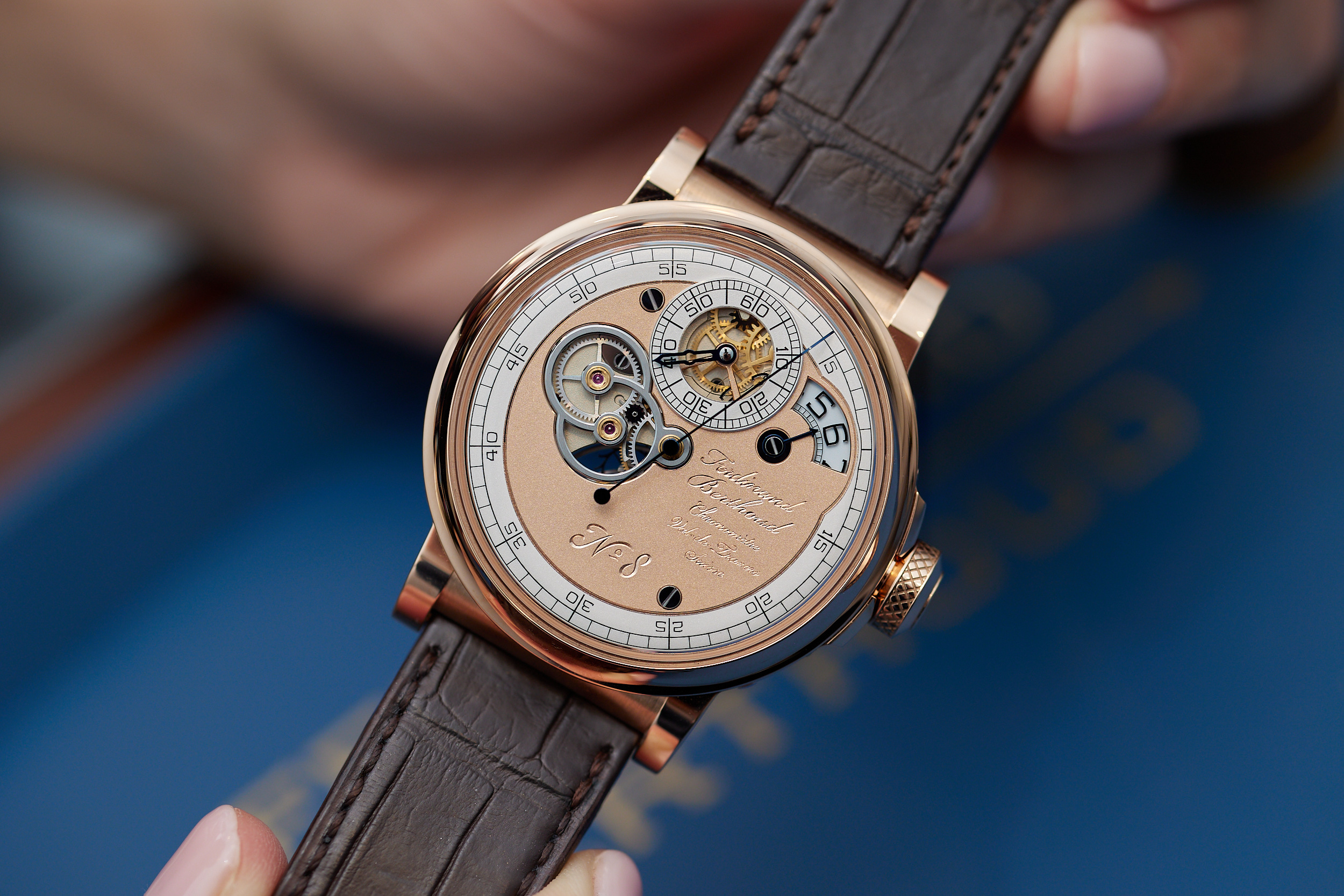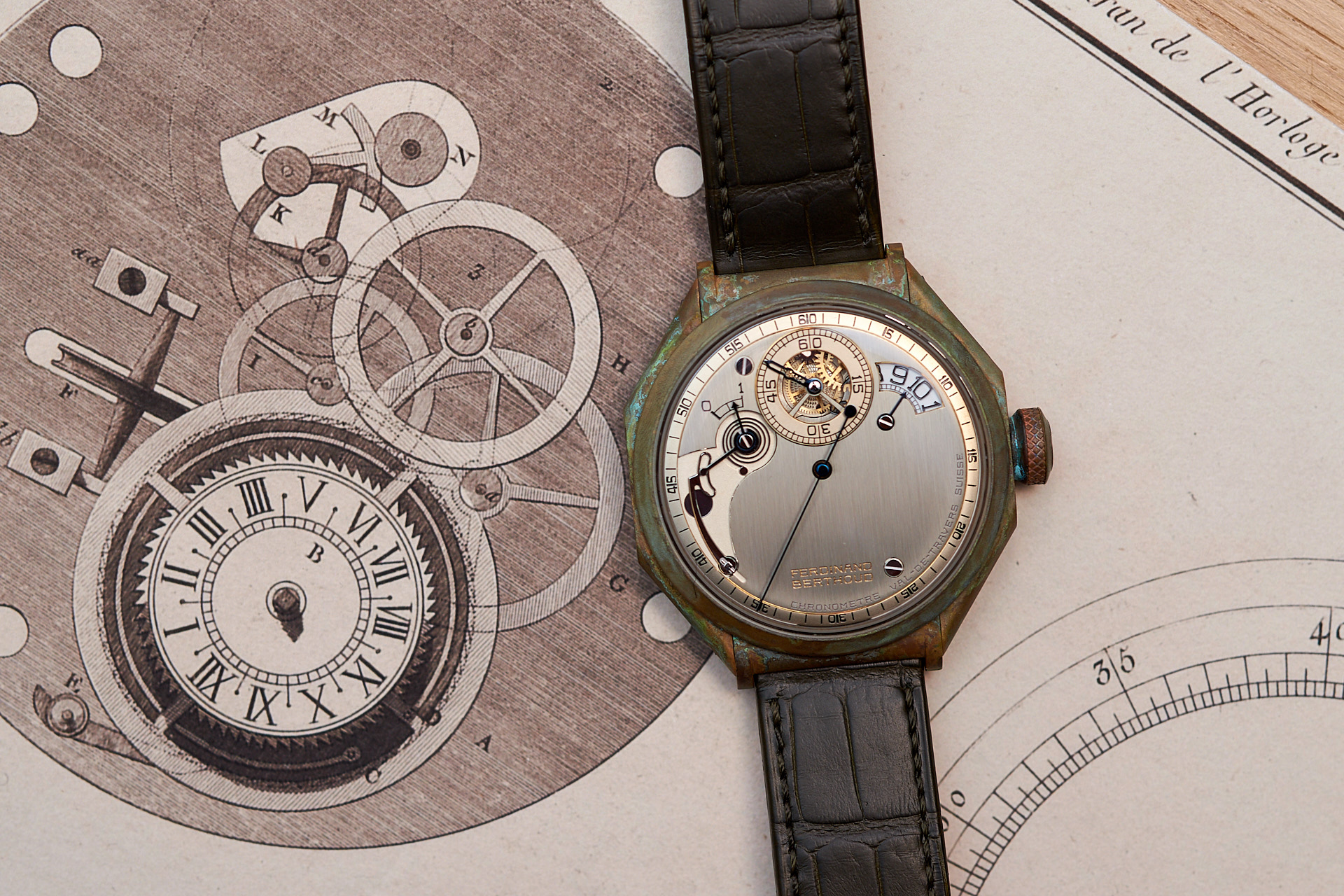This October, Chronométrie Ferdinand Berthoud presents a new model inspired by a historic civil timekeeper of the French post-revolutionary period. The stunning Chronomètre FB 3SPC forms the third pillar of the brand’s collections.
Ferdinand Berthoud and his 18th century marine chronometers have amazed Karl-Friedrich Scheufele. Research followed by collecting, and he ended up launching the Chronométrie Ferdinand Berthoud manufacture as a tribute to the great engineer in 2015. The past seven years gave modern and progressive wristwatches inspired by Berthoud’s marine chronometers to the connoisseur community.
With the Chronomètre FB 3SPC, Mr. Scheufele’s team bows before an important civil development of Ferdinand Berthoud’s nephew Pierre-Louis Berthoud, called the No. 26 decimal watch.
Pierre-Louis Berthoud and the No. 26 decimal watch
Pierre-Louis Berthoud (also known as Louis Berthoud) was born in 1754 in Plancemont-sur-Couvet, in the Principality of Neuchâtel as the son of watchmaker Pierre Berthoud and the nephew of Ferdinand Berthoud. By the time he was born, his uncle was already a Master Watchmaker in Paris. Louis Berthoud started to learn watchmaking on his father’s side at the age of 12 before continuing his studies in Paris at his uncle’s invitation. Louis assisted Ferdinand Berthoud in manufacturing sea clocks, as Berthoud received royal commissions following the successful sea trials of his marine chronometers in 1770. Devoting himself to his research, Ferdinand Berthoud left the management of the Paris workshop to his other nephew and Louis’ elder brother Jean-Henry (1741-1783). Louis returned to Couvet and he stayed there until Ferdinand Berthoud called him back to take over the business following the tragic suicide of Jean-Henry. Louis returned to Paris in 1784 and maintained a healthy business with good documentation (today at the Musée des Arts et Métiers in Paris) and the management of the workshop. After his uncle’s death in 1807, Louis Berthoud took over the entire business of Ferdinand Berthoud.
The No. 26 decimal watch was made through 1792 until June 1793 for Chevalier de Borda, a French mathematician, physicist and naval officer. The creation is a memento of a short-lived period of France, when measuring time in decimal-related values was in effect between 22 September 1794 and 7 April 1795. This representation of time divided a day into 10 hours, each hour into 100 minutes and each minute into 100 seconds. So as opposed to our current 86,400 SI seconds per day, decimal time had 100,000 seconds. The decree came out on 5 October 1793 during the French Revolution following Borda’s proposal on 5 November 1792 to the National Convention. Decimal time was part of a broader initiative called ‘decimalization’ that included currency as well as metrication. The mandatory use of decimal time was abandoned in the same decree when the initial metric system was established on 7 April 1795.
Louis Berthoud was commissioned by Chevalier de Borda to create the decimal watch in January 1792. Due to the difference in the units, he spent more than a year calculating the system of gears with teething to fit to the new decimal timing and conducted a number of trials until the timepiece was completed in June 1793. Louis Berthoud regarded the No. 26 decimal watch as the most important chronometer he made.
The watch was auctioned by Antiquotum in 2006 and is now on display within the Chronométrie Ferdinand Berthoud heritage collection in Fleurier.

Chronomètre FB 3SPC
The novelty clearly moves towards the filigree curves of the pocket watches from the more massive aesthetics of the marine chronometers. Yet, it also retains some of its characteristics, like the helical (or cylindrical) balance-spring that many marine chronometers included at the time due to their increased accuracy. If executed well, cylindrical balance-springs can pulsate concentrically and more evenly than flat springs, and to achieve better isochronism Louis Berthoud also kept it in the No. 26 decimal watch, although it was not intended for the sea.
The new Calibre FB-SPC ‘s beautiful balance wheel takes the main stage at 9 o’clock with a grand opening that has no back panel. You can almost feel the beating wheel on the skin, making the connection to the wearer direct and intimate. It can be adjusted by 4 fine and 12 load adjustment screws, and is held by a screw-in heel-shaped bridge that is inspired by those used by Berthoud (also on the No. 26 for instance). The three-dimensional movement of the helical balance-spring is a joy to watch. Watchmakers have spent a considerable amount of time shaping the curves for optimal beating, and thus contributing to achieving the high standards of the Fleurier Quality Foundation protocol. The escape wheel revolves just south from the balance wheel fixed on a smaller but similarly formed bridge pointing to its bigger brother. These bridges are probably the only straight-edged visually appearing components as curves dominate the space from all sides.
As customary for the manufacture, the colours and finishing alternate in order to enhance the three-dimensional nature of the timepiece. The mainplate and the bridges are sandblasted nickel silver and the chamfers are cut and polished by hand.
The new round case is made of 18k gold and has a slender bezel. It is 42 mm in diameter and is 9.43 mm thick.
The model is made in two colourways. The case of the lighter is white gold and the sandblasted movement components are 2N yellow gold. They are complemented by an eggshell-coloured dial in sandblasted silver-toned brass. The darker version is 5N rose gold with a black lacquered minute ring and black rhodium movement components. The hands on both are 18k gold. Mr. Scheufele highlighted that all gold is obtained from ethical sources.
The production of the astonishing new model is limited by production capacities to 25 pieces annually.
Photo credits: Loupiosity.com
All registered trademarks are property of their respective owners.
All rights reserved.

